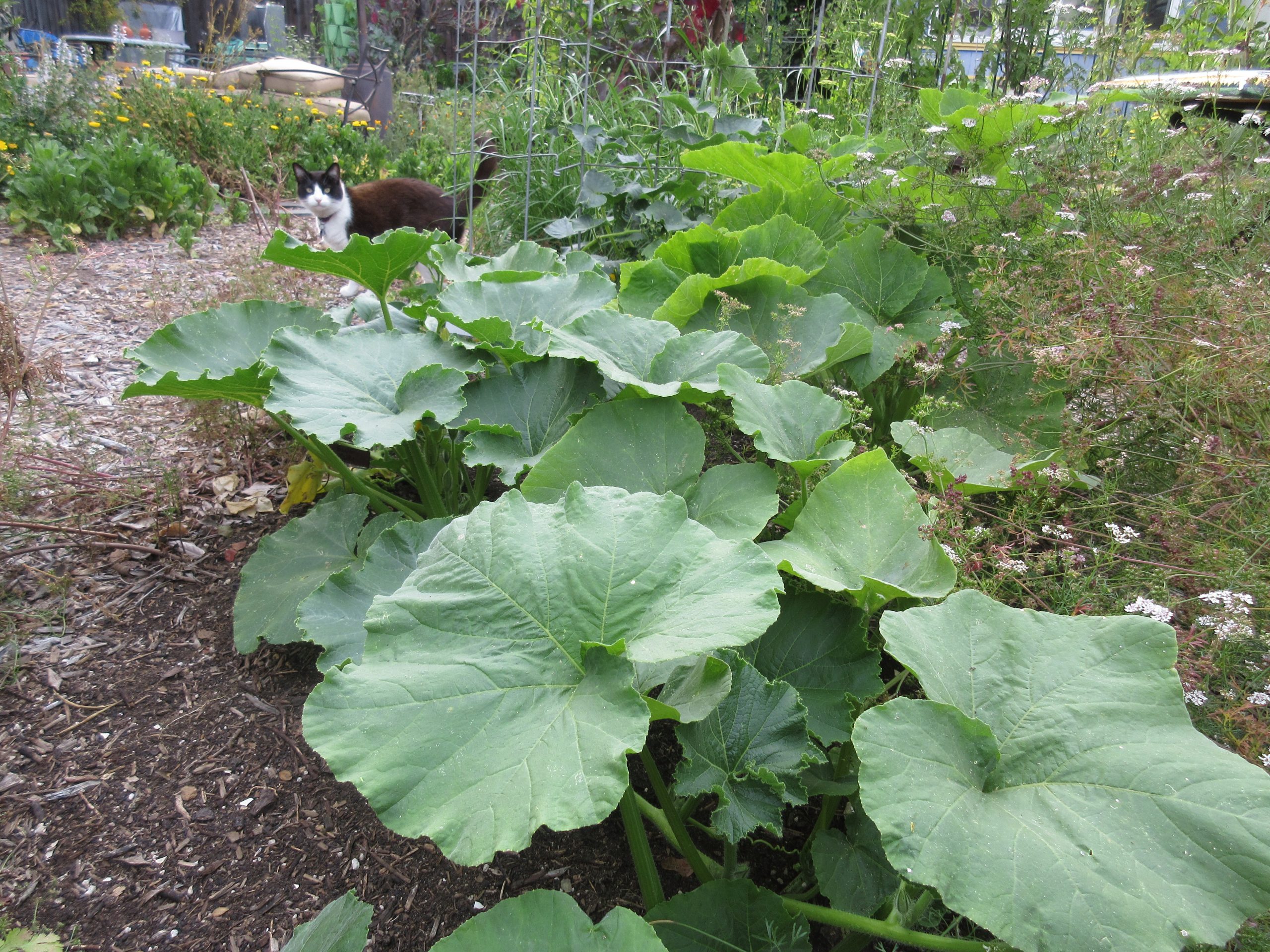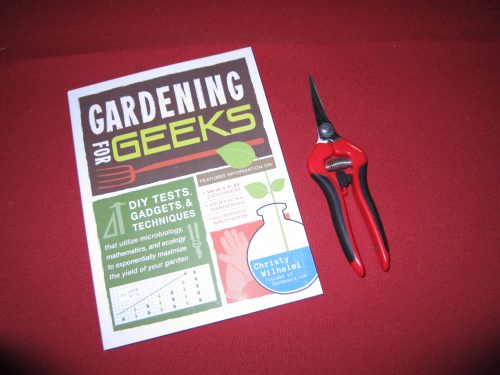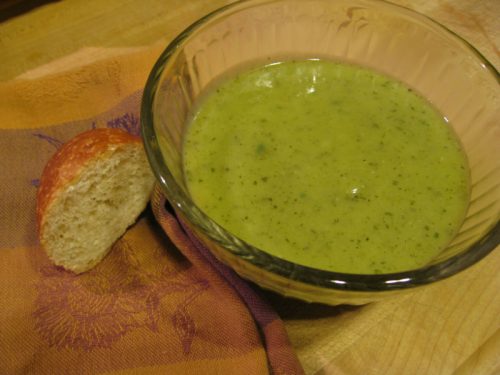Ann wrote in to Ask Gardenerd with questions about planting squash and melons:
“Hi! Just watched your terrific video on planting squash. Super helpful: am in SE NC where it’s hot and can be rainy (or not) with soil that drains fast. A few questions: how many squash plants should I put in the area encircled by the moat? (plants, not seeds). Should I use this method for planting cantaloupe? And what’s an easy way to prevent critters from chomping cantaloupe (may be turtles)?“
For those not familiar, the video Ann is referring to is this one. Let’s tackle your questions, Ann, one at a time.

How Many Plants?
We like to plant 3 seedlings in a triangle inside the moat. From seed we plant 6 seeds, two in each hole, in that triangle. BUT – if you’re starting with seedlings from a nursery, most of the time those 4″ pots come with 2 to 3 seedlings in one pot. If that is the case, just plant 1 4″ pot.
If you’re worried about critters eating the sprouts (as we are here), double up on your seedlings and then thin to 3 strong plants once established.
Note Re: nursery seedlings – We don’t like to break up cucurbitaceae plants because they don’t like to have their roots disturbed. Better to plant the whole root ball, and then thin by snipping the above-ground growth at soil level. Those roots will give way to the remaining plants.
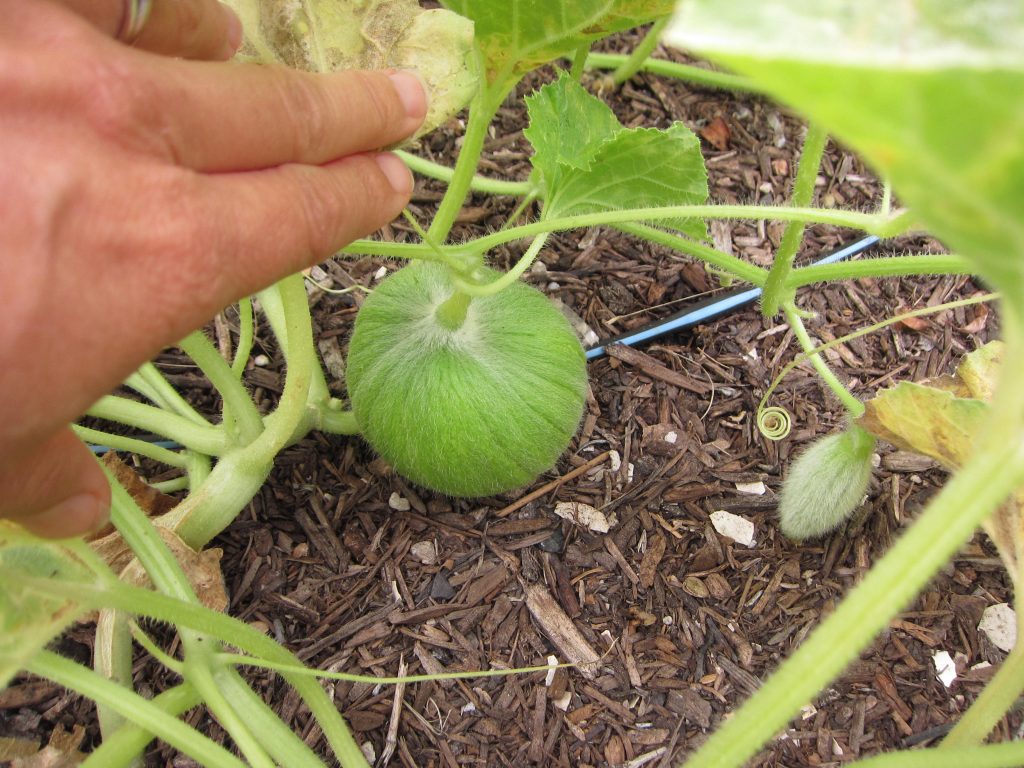
Does this Work with Cantaloupe?
Yes, you can use the moat method for cantaloupe as well. Another way to plant cantaloupe is at the base of a strong trellis and grow them vertically. You do have to support the melons as they form (with a sling of an old t-shirt or pair of pantyhose), then you’ll save space and have room for another crop. This leads me to your next question, Ann.
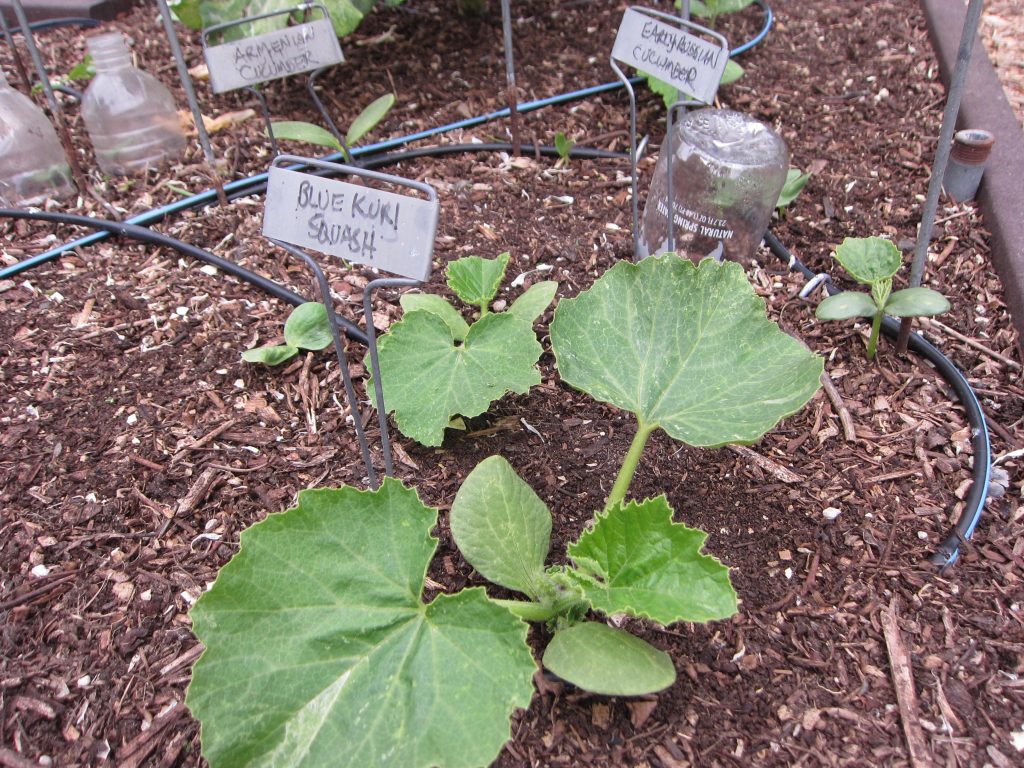
Protection from Critters
That vertical option will keep ground-dwelling critters from eating your cataloupe and squash plants. Or use cloches to cover the plants while they are young. There are many types available online as well. Here’s a sample.
But when it comes to protection of established plants, floating row cover is great if you can’t use bird netting. (That said, we pin down bird netting around the edges so birds can’t get inside – use a thin length of wood along the edge to prevent gaps).
Caveat – if you use floating row cover, you will need to uncover the squash and melons in the morning when they flower or plan to hand pollinate each morning during the fruiting season.
If you are the DIY kind of person, you can also create cages from hardware cloth (1/2″ welded wire mesh) to keep your turtles from getting inside. If they are not climbers, just a perimeter fence of hardware cloth might do the trick as well.
I hope this helps, Ann. And thanks for watching (and subscribing to) our videos. You’ll find a course-full of more pest prevention tips in our online course, Creating a Healthy Garden.

